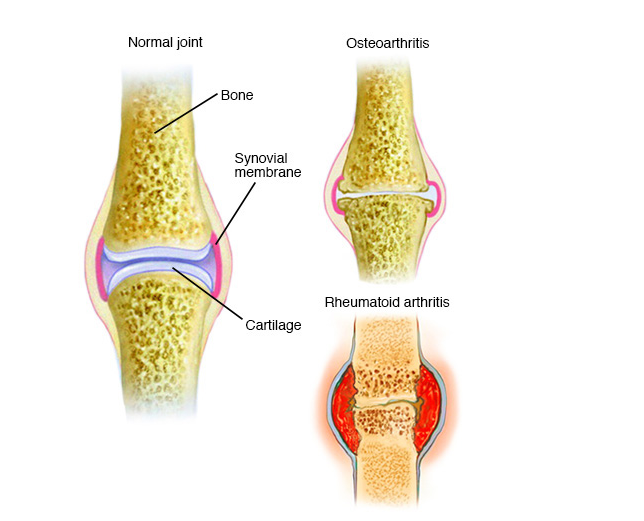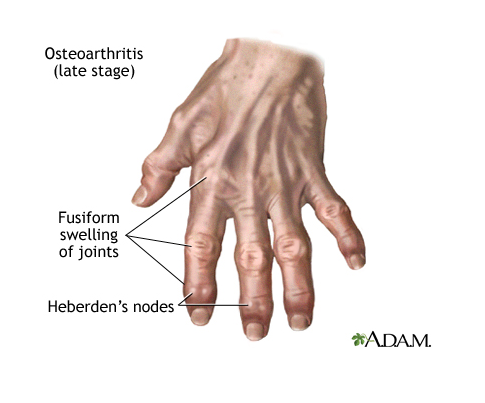By: Dr. Rami Rustum – Feb. 2017
“Doctor, yes I was told I have arthritis. Now you are telling me that I have Osteoarthritis?? How come?”.
This question is typical one which I hear at least 2-3 times every day as many patients affected by arthritis don’t know the differences between the major two types of it. After explaining the nature of each one, I usually use pictures showing the differences between the 2 types:
Rheumatoid Arthritis
Rheumatoid arthritis is a destructive autoimmune joint disease that features inflammation in the joint lining tissue (synovium) that normally produces lubrication and nutrient fluid for joints. When this tissue remains inflamed, it leads to deformity (by loosening joint ligaments) and to  joint destruction (by eroding away cartilage and bone). Rheumatoid arthritis is an autoimmune disease characterized by an overactive, misdirected immune system. In rheumatoid arthritis, the misdirected immune system attacks the joint lining tissue leading to destructive inflammation of the joints. Ligaments, cartilage, and bone can all be damaged from rheumatoid arthritis.
joint destruction (by eroding away cartilage and bone). Rheumatoid arthritis is an autoimmune disease characterized by an overactive, misdirected immune system. In rheumatoid arthritis, the misdirected immune system attacks the joint lining tissue leading to destructive inflammation of the joints. Ligaments, cartilage, and bone can all be damaged from rheumatoid arthritis.
Rheumatoid arthritis is also a systemic disease, meaning that it can additionally involve tissues throughout the body, including the lungs, skin, and eyes. Rheumatoid arthritis tends to affect many joints symmetrically on both sides of the body. The inflammation of active rheumatoid arthritis is characterized by joint stiffness in the morning lasting over 30 minutes.
Osteoarthritis
Osteoarthritis is a disease of the cartilage of joints. Osteoarthritis is not a systemic disease and not an autoimmune disease. Osteoarthritis is partly a result of natural aging of the joint. With aging, the water content of the cartilage increases, and the protein makeup of cartilage degenerates as a function of biologic processes. Eventually, cartilage begins to degenerate by flaking or forming tiny crevasses. In advanced osteoarthritis, there is a total loss of the cartilage cushion between the bones of the joints. Repetitive use of the worn joints over the years can mechanically irritate and inflame the cartilage, causing joint pain and swelling. Loss of the cartilage cushion causes friction between the bones, leading to pain and limitation of joint mobility. Inflammation of the cartilage can also stimulate new bone outgrowths (spurs, also referred to as osteophytes) to form around the joints.
Osteoarthritis occasionally can develop in multiple members of the same family, implying a hereditary (genetic) basis for this condition. Osteoarthritis is, therefore, felt to be a result of a combination of each of the above factors that ultimately lead to a narrowing of the cartilage in the affected joint. Osteoarthritis is sometimes referred to as degenerative joint disease.
To Email Dr. Rustum: rrrustum@yahoo.com

